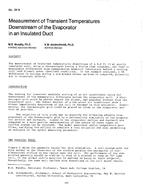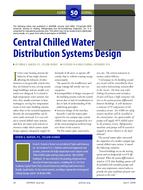The performance of vapour barriers in typical residential walls is investigated through numerical analysis. A two-dimensional heat, air, and moisture transport model that simulates transient effects is used. Two series of calculations are performed. In the first series, the wall is exposed to constant boundary conditions, representative of typical heating periods, for a fixed interval. In the second series, the exterior conditions are chosen to be representative of three Canadian locations, Vancouver, Winnepeg, and Ottawa. In each series, six different levels of vapour resistances are imposed. Each of these cases is simulated for each location for a two-year period. All results indicate the influence of convective flow within the insulation in the wall cavity to direct moisture to the upper part of the wall. In the absence of a vapour barrier, this results in localised moisture accumulation at the interface of the insulation and the exterior sheathing. Depending upon the severity of the winter conditions, different levels of water vapour resistance that avoid localised moisture accumulation are identified at the three different geographic locations. At all locations, for all cases, for the interior boundary conditions chosen to be representative of a comfort level, the moisture accumulated during the heating season, due to diffusion, dries out in the summer and avoids any cumulative effect, year after year. Discusses the implications of the findings for various Canadian cities.
KEYWORDS: computers, models, calculating, performance, vapour barriers, Canada, domestic, housing, buildings, moisture, water vapour permeability, walls, heat flow, air flow, thermal insulation, cavity walls, winter, gypsum plasterboard.
Citation: Symposium, ASHRAE Trans., 1993, vol.99, part 2, paper number DE-93-1-1, 429-439, 7 figs, 2 tabs, refs.
Product Details
- Published:
- 1993
- File Size:
- 1 file , 1.3 MB
- Product Code(s):
- D-17551


